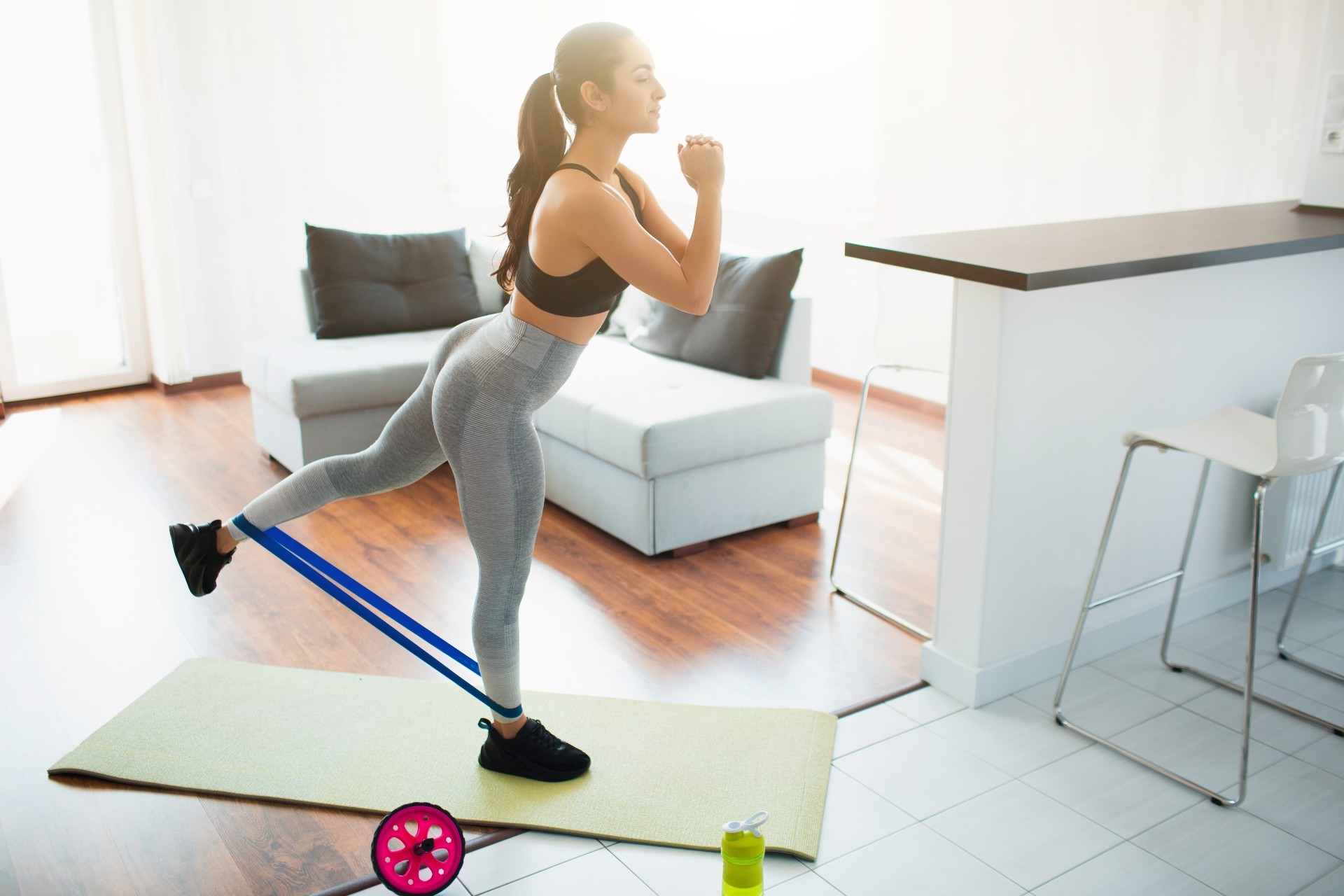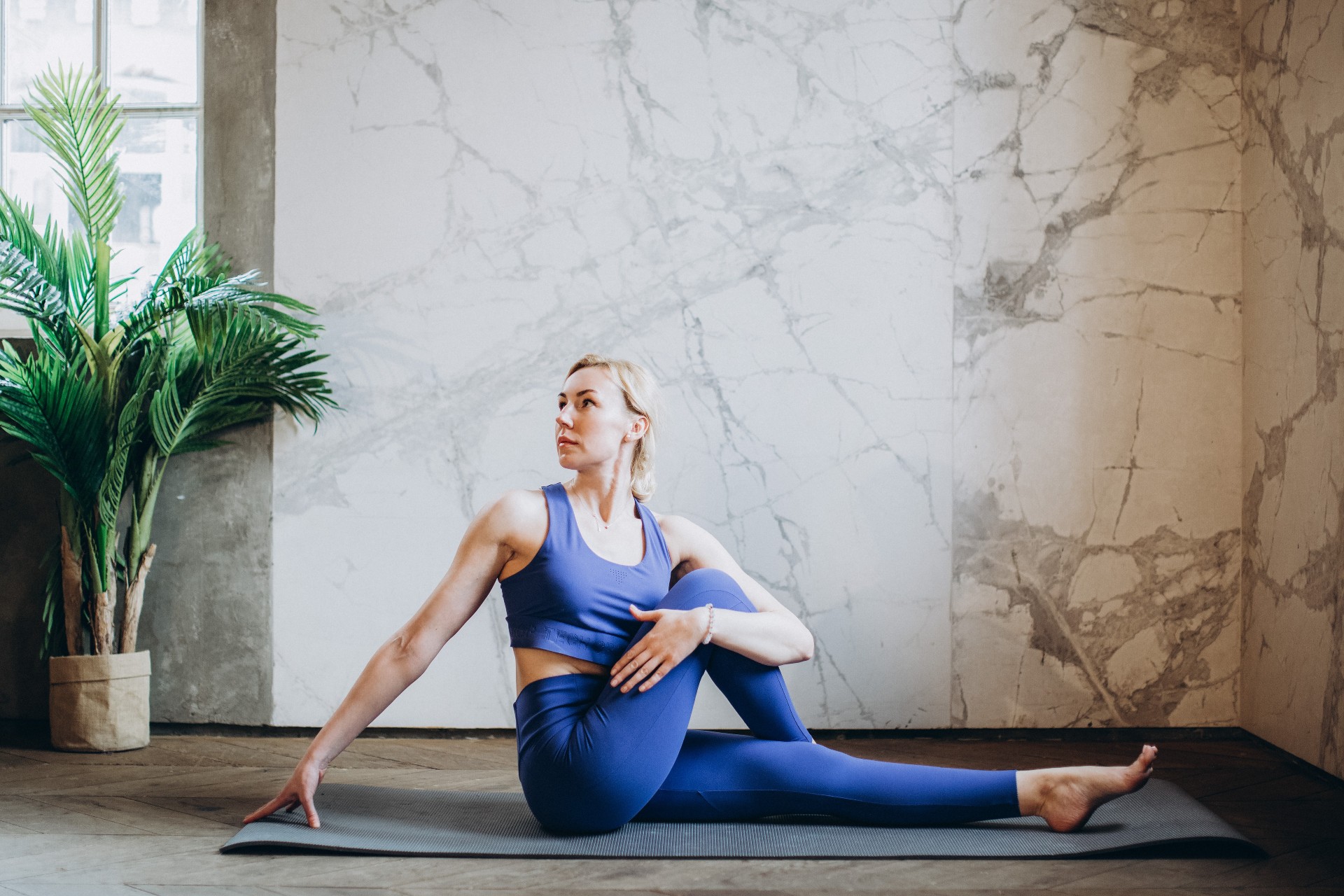Exercise
How to stick to your New Year fitness goals
Keen to accomplish some 2024 fitness goals? Exercise often tops our list of New Year’s resolutions, but many of us struggle to maintain momentum throughout the year. Research shows 80% of January gym-joiners quit within five months!
So what makes us more likely to stick to our goals? And why might we fail? Here we explain the best approach to staying on track with your fitness in the New Year.
Why do New Year’s fitness resolutions fail?
Although failing to meet our goals often seems to result from individual circumstances, there’s more of a common thread than we might think. We spoke to Team GB Olympic performance psychologist, Dr Kate Goodger, to find out more. As she explains, the overarching issue is that the goals we set on January 1st tend to be based on emotion rather than logic.
“We think we’re turning over a new leaf and the New Year symbolises a significant change for many,” she says. “However, it is often our emotions driving this because we’re unhappy with an aspect of ourselves or we feel bad about overindulging over Christmas.”
As a result, we end up taking on goals that are too big and require significant effort or deprivation. Not only is the output we expect of ourselves unsustainable, but we can also easily reach a point where it becomes too hard due to our fluctuating emotions.
How to stick to our 2024 fitness goals

Getting fit can seem daunting, but it doesn’t need to be. It’s how we approach exercise that really impacts our ability to keep up with our aspirations.
Here are some of the best tips for staying motivated with fitness ambitions.
Check in with our motivation
Thinking about why we want to do more exercise is a key first step to achieving our goals. There are lots of reasons why increased movement should be on our list, but some help us to stay more committed than others.
While it’s perfectly acceptable to exercise to lose extra weight, we risk running out of steam if that’s the only reason it’s on our list. Focusing purely on weight loss tends to negatively reinforce pre-existing body issues. This makes us feel worse and more likely to give up.
“For lots of women in particular, a lot of exercise activity is framed in terms of getting a ‘beach body’ or losing weight or toning up,” explains This Girl Can campaign lead, Kate Dale. “That doesn’t really sustain in terms of motivation. The amount of time it can take to make a real impact on your body shape just through exercise means you’ll have lost the motivation before you get there.”
Instead, we need to focus on how exercise makes us feel rather than look. Increasing our heart rate pumps oxygen around our bodies and causes endorphins to be released. This means it can positively affect our health and mood.
Regular movement also has a host of lesser known benefits. This includes increasing energy levels, improving creativity, and supporting mental wellbeing. Being motivated by benefits like these, which we’ll see in the short term, gives us a reason to exercise even when we really can’t be bothered.
Writing down why we want to achieve our New Year’s resolutions, and the benefits of doing so, can be helpful.
“It is really important to challenge yourself as to why you want to achieve the fitness goals you want and what difference they will make in your life,” explains Dr Goodger. “Being able to articulate their value will help you become more fully invested.”
Widen the definition of exercise

Many of us are put off exercise by memories of school PE lessons or past visits to the gym. The good news is that running on a treadmill for an hour isn’t the only form of exercise! What’s important is getting our heart rate up – it doesn’t matter how we do it.
From climbing and skipping to dancing to music, there are plenty of fun alternatives that meet the criteria. A good measurement for activity is being able to hold a conversation but not sing a song – so even walking counts!
“There is no such thing as a lazy exercise,” says Kate Dale. “If your heart rate’s up and you’re using your muscles, your body and your head will feel better for it.”
Our workout also doesn’t need to last as long as we may think. NHS guidance for adults is simply 150 minutes of moderate intensity exercise per week. We can split this up as we see fit, and even break it down into short bursts.
At-home practices are a great way to squeeze in exercise. This playlist of ultra-short yoga classes is great for when we only have five or 10 minutes.
Activities like stair workouts can easily be slotted in, too. Research shows that just a small amount of light physical exercise is more beneficial than nothing. Another smart alternative is to go for a walk while we’re on the phone. This works for both conference calls and catch-ups with friends!
It’s not only about cardio either – it’s important to remember our muscles too. Doing two days of muscle-strengthening activities each week will hugely benefit our wellbeing. That doesn’t mean we need to be using weights, though. Carrying heavy shopping bags, lifting children and yoga will also do the job.
Get in the right mindset
Shifting our mindset is vital to achieving our fitness goals. Our mindset affects how we approach lifestyle changes. It influences how we think, feel and act, and makes us more open or closed to trying something new.
Luckily, the neuroplasticity of the brain allows us to change our mindset, meaning we can easily rewire how we see situations and develop new habits. According to Dr Goodger, the key to shifting our mindset lies in clearly identifying what we want, and asking ourselves what we need to be successful.
“Changing mindset starts with finding the unhelpful habits or patterns of thinking or behaving and developing a plan to rewire them,” says Dr Goodger. “A good way to identify the unhelpful habits is to ask yourself what the typical excuses are that you hear yourself saying to avoid doing something.”
It’s also important to consider what unhelpful or self-sabotaging habits we already have that might hold us back. Thinking about these will allow us to better plan. For example, if we know we’re unlikely to enjoy exercising on a cold January morning, it’s worth buddying up with a friend.
We’re more likely to go as we won’t want to let that friend down.
Set realistic goals

Although it’s tempting to try to completely overhaul our lives come January, this won’t help us in the long run. For a better chance at success, start with small, achievable goals.
According to KitFitness personal trainer, Kat Sterbova, New Year’s fitness resolutions usually fail because goals are too unrealistic. Research also shows that small and manageable changes are key to forming habits, since failure can be discouraging.
Making a sudden transition to a strict no-carb diet and cardio five days a week isn’t our best course of action if we haven’t exercised properly in years. Not only do we risk injury, but it will quickly become too much. After all, a prospective marathon runner doesn’t do the whole 26.2 miles on their first go!
Instead, we need to aim to increase our weekly movement. Easing ourselves in with less intensive workout options, like yoga or walking, can allow us to build up gradually.
“There is a lot in the saying ‘Don’t bite off more than you can chew,’” says Dr Goodger. “It’s more effective to set a really specific goal over a short period and make sure it includes the simplest thing you can do.”
She recommends running a ‘micro-experiment’ for a couple of weeks to get started. This can be anything from changing our breakfast habits to include more protein to going for a short walk around the block each day.
If the experiment works, we can then work on extending it into a regular part of our routines. Smaller habits will be easier to adopt and stick with, particularly if we have a busy lifestyle.
Working with a fitness coach can help too, since they’ll create a tailored programme that won’t feel overwhelming. Plus, the accountability will keep motivation going!
Schedule it
In order to achieve a goal, we need to make it a priority – and that means allocating time for it.
Whether it’s a walk or a HIIT workout, scheduling exercise in a diary or phone will make it a more concrete commitment. We’re far more likely to get distracted doing other items on our to-do lists if it’s just in our heads.
Making time regularly for exercise will also help us to develop it into a habit. Even better, we can speed this up by doing workouts on set days, or at the same time each day.
Knowing the details can help us to plan, creating a less stressful experience. We can make it easier for ourselves by packing a gym bag or laying out any exercise clothes and tools the night before. Not only will it get us going faster, but it will be harder to back out as well.
Record progress

Tracking our progress is a fantastic way to make ourselves feel empowered, as well as maintain motivation.
Personal trainer Kat recommends recording all little progressions, from each kilo lifted to every mile run. We can do this in whatever form suits – through apps, photos, a journal, or even the Notes section of a phone.
Dedicated apps are excellent tools for those of us keen to get into a particular sport too. Lapsed runners will love Nike Run Club, which includes guided sessions and training programmes. It also shares key stats such as pace, distance and time.
Couch to 5K is also perfect for beginners, since it gradually builds up running ability over nine weeks. There’s a different schedule each week and rest days are incorporated. Cyclists, meanwhile, can use Strava. This popular app tracks routes using GPS, which can then be shared with the community via its social features. More into weights? Fitbod helps with tracking strength-training goals.
Going old-school with pen and paper is another alternative. We love this Fitness Planner, which includes sections for tracking workouts, recording meals and reflecting on the week.
Recording our fitness growth also allows us to celebrate small wins. Patting ourselves on the back is essential to maintaining motivation well into the year, and this is easier to do if we can visualise how far we’ve come.
Even better, keeping a daily or weekly list of successes that we can look back on when we’re feeling uninspired or doubting ourselves can give us that extra push.
Make it fun
Maintaining motivation isn’t easy. Research shows that we’re far more likely to stick to an exercise programme if we enjoy it.
Not sure what your sport is? The best way to find out is to try a few. We can leave if we don’t enjoy it – or, in the case of online classes, just close the laptop!
“This isn’t PE at school,” explains Kate Dale. “You’re not going to get detention, you’re not going to get lines, you’re not going to get judged – they might ask if everything’s okay, only because they care, but you can always leave.”
Hate running but want something that burns calories? Try skipping, swimming or HIIT workouts instead. Loved netball at school? Rekindle your long lost passion as an adult.
Activities like hula hooping or trampolining combine fitness with play. If exercising at home is starting to get boring, a weighted hoop or fitness trampoline is the perfect way to spice it up. Alternatively, mixing up the type of exercise we do will keep us more interested.
Likewise, if the gym doesn’t suit us, it’s best to try something else. We’ll have a better shot at getting fit by choosing an alternative to enjoy more.
Be kind to yourself

Self-care is always particularly important in winter months. If we want to succeed at our fitness goals, it’s important that we’re kind to ourselves.
We should try to avoid guilt and not be too hard on ourselves if we stumble – it’s normal. So what if we set out to exercise three days a week and only managed two? Any movement is better than none, so we need to celebrate what we did do and try again the next week. Missing the gym a few times isn’t going to set us back in the long run, but beating ourselves up about it could, because it makes us more likely give up.
It’s vital to reward ourselves emotionally for what we achieve. We can take a 90:10 approach, where we aim to stick to our plan 90% of the week. This will help keep us on track. Taking breaks is also important. Exercise can help with fatigue, but sometimes we really just need a day off.
Likewise, we need to make sure we’re eating enough and getting sufficient sleep. A balanced diet and a good night’s sleep will improve both our energy levels and stamina. See Liz’s favourite energy-boosting foods here.
Be part of something bigger
Joining a fitness community or taking part in a challenge is an excellent way to keep ourselves motivated. Solo exercise can be great, but many of us thrive on feeling part of something bigger.
This can be anything from our local tennis club to a charity run. Online communities are a particularly great lifeline, too. We love This Girl Can, Girls Gone Strong and Yoga With Adriene.
Having a fitness buddy will also give us the same kind of connection and accountability on a more personal scale. Research shows that finding a new exercise companion increases the amount of exercise taken, especially if they’re emotionally supportive. Doing it with a friend with similar goals will create healthy competition and offer a shoulder to lean on during any lows – plus someone to celebrate with!
Read more articles like this
- Toning Pilates moves to get stronger in minutes
- The midlife benefits of muscle toning exercises
- Everything you need to know about starting exercise
Words: Tilly Alexander





